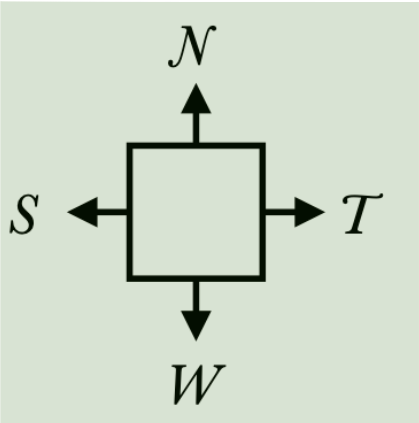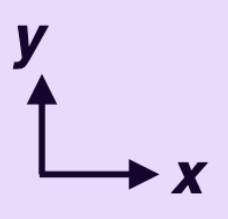18. (Problem Solving)
Drawing Force Diagrams
For each object of interest in the problem:Red
1. Make a list of the forces acting on that object.- Start with weight (if applicable).
- Identify all objects that touch the object.
- Any pulling on the object (by a rope e.g.) is tension.
- Any surface in contact may supply a normal force or a frictional force or both.
- If the surfaces are sliding against each other, then it is kinetic friction. If not, then it is static friction.
Green
2. Draw a force diagram of the object with all the forces labelled, either with their value (if given) or with a distinct variable name. (Use subscripts if there are, for instance, more than one normal force.)- Weight points down.
- Tensions point in the direction of the rope or pull
- Normal forces always point towards the object, perpendicular to the surface of contact.
- Kinetic frictional forces point along the surface, opposite the direction of motion.
- Static frictional forces point along the surface, in whatever direction is necessary to maintain equilibrium. (If you cannot determine the direction, pick one at random.)
Purple
3. Define the positive x and y directions by drawing an axis.Blue
4. Next to the list you wrote in Step 1, draw two columns, for x and y. Write the components of each force in the table next to the force's name:- If the force points along one of the axes, put a dash in the other column.
- If the force does not point along one of the axes but at an angle, then you will need to break it down into its components: if the magnitude is X then one column will be “X cos(angle)” and the other will be “X sin(angle)”.
- Write a $+$ or $-$ in front of each entry, indicating whether it points in the positive or negative direction. You may omit the sign if the force is a variable and you don't know the direction it points in.

Example: A 8N block is being pulled by a rope but does not move.
Table
| Step 1 | Step 4 | |
| Force | x | y |
| Weight | — | $-8$ |
| Tension, rope | $+T$ | — |
| Normal, floor | — | $+N$ |
| Static friction, floor | $-S$ | — |

